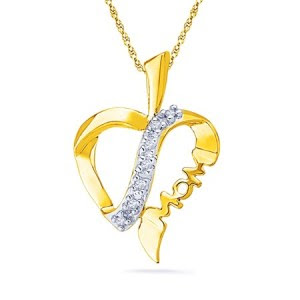Jewelry as ‘Architecture for the Body’
As founder and president of the National
Jewelry Institute, Judith Price is friends with the heads of all the
big names in jewelry. And while she does own some of their pieces, she
stopped wearing them when she established the nonprofit organization in
2002. “It seems to me like a conflict of interest,” Ms. Price, a former
journalist, explained.
Besides, her
personal passion is collecting jewelry that has less prominent or
virtually unknown makers. “It’s the fun stuff,” she said.
Sitting
in her apartment on New York’s Park Avenue, Ms. Price laid out a
selection of “things that I love that are unsigned.” She compared them
with the African art that she and her husband, Peter, collect and that
also fills their apartment on the Île Saint-Louis in Paris. “If the
piece has no signature, then you look at it as I do, as architecture,”
she said. “Jewelry, for me, is architecture for the body.”
To
demonstrate, Ms. Price lifted a bracelet of barrel-shaped black onyx
segments set in 18-karat white gold and dusted with diamonds that she
bought at a Hôtel Drouot auction in Paris. “Just look at it,” she said.
The fact that it was made by the famous French house Puiforcat was
beside the point: “It looks like a skyscraper. That’s what matters.”
Another
acquisition, from an antique shop on the Rue de Lille, is a big red
resin watch by Pierre Cardin that screams ’60s and resembles the spiral
architecture of the Guggenheim Museum. Does she wear it, or just enjoy
looking at it? “It’s like a vintage car,” she said. “Half the time it
doesn’t work.” But no matter.
“My
penchant is for big, bold pieces,” she continued, like the brown onyx
necklace from Monies in Paris that looks like shards of ice, or the New
York City skyline.
Ms. Price is well known in New York —
and elsewhere. Before beginning the jewelry institute, which this year
established courses in collaboration with the Parsons School of Design,
she was president and publisher of Avenue magazine, a venture that
stemmed from her days as a reporter at Time magazine. It was at Time
that she met her husband, Peter, a business entrepreneur and publishing
executive then working on the business side of Life. He took her out to
lunch, or as Ms. Price put it, “he expensed me.”
Years
ago, Ms. Price and her husband began making annual trips to Lisbon. And
during every visit, Ms. Price would return to the same antique store
and spend a few hundred dollars buying jewelry. “I knew nothing about
jewelry at that time,” she said. But she knew what she liked: “Gutsy
stuff, as opposed to pretty stuff.”
She picked up a hefty, four-inch cuff of black enamel and 18-karat gold
purchased at the store. “Do I know who made it?” she asked. “No.” She
fingered a large topaz and emerald cross bought from the same shop.
“There are no marks,” indicating the maker, she said, but she liked the
cross because “it is quite unusual because the emeralds are inverted and
not polished,” giving the piece a raw, unfinished look. “None of this
could be considered pretty,” she said.
“Everyone has her own thumbprint” when it comes to collecting jewelry,
Ms. Price said. “Some women collect flowers. Others might collect
animals.”
Ms. Price has amassed a collection of
vintage minaudières, simply because she likes the architectural
structure of the small evening bags. “Feel this,” she said, handing over
a vintage enamel, gold and ruby rectangle clutch by Van Cleef &
Arpels. “It’s much too heavy to actually use.” But not to admire, with
its arrangement, in bento box fashion, of lipstick tube, cigarette
lighter, powder well and so on. “It’s sculpture,” she said, or a city
block with buildings of various sizes and heights.
Ms.
Price’s collection contains items that are very personal, like the
silver charm in the shape of a record that a friend gave her, to
commemorate her cover of “Santa Baby,” released in 1952 under the name
JP.
Another favorite piece is unusually slender and delicate for her taste,
but it holds great sentimental meaning. It’s a ring. “It says ‘merci”’
in diamonds, she said, and was a gift from the jeweler Lorenz Baumer to
thank her for mounting an institute exhibition of his work. “Was it
expensive?” she asked rhetorically. “That’s not the point. It has
nothing to do with money.”
Indeed, one of her favorite finds was downright cheap. When strolling
through the Kapali Carsi, or Grand Bazaar, in Istanbul, she saw a set of
military medals from the Order of the Ottoman Empire. “I bought them
because they were so colorful, with their red enamel centers and raised
crescents of gold. I bought three of them and asked if they could be
hung from a wire to make a necklace. I asked, ‘How much?’ ‘$10.’ ‘How
long will it take?’ ‘Seven minutes.”’ Ms. Price wore the necklace
recently with a black Chanel haute couture skirt and simple white blouse
while taking her group of jewelry program participants to lunch with
the president of Bulgari’s American operations.
Of course, to
some, wearing the Ottoman medals might be considered improper. “The rule
is that only if you’ve been awarded the medal should you wear it,” Ms.
Price said.
Over the years she’s
received many awards, but there’s one medal she’s particularly proud of:
The French Legion d’Honneur. She had a reproduction of the ribbon made
in red rubies. “I wear it over my heart,” she said, “every day.”
If you are in search of gold rings for men and want to know more about it then please contact us in the comment section.
If you are in search of gold rings for men and want to know more about it then please contact us in the comment section.





Comments